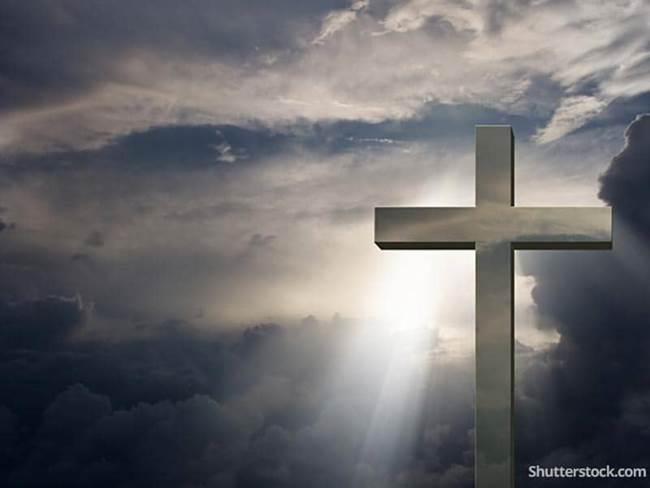By Jonathan Shea.

In the run-up to Pope Francis’ visit to the United States, much ink has been spilled and many pixels exploded over the pending canonization of Bl. Junipero Serra, the founder of the California missions. The controversy, centering on how the native peoples of California were treated by the Spanish (be it the mission priests, colonial government, etc.) has been well-treated in both the Catholic and mainstream press.
Remarkably, on the other side of the country the story of the Spanish and Native American Catholic communities is only now beginning to come into focus. Their own heroic and tragic story of two centuries came and went long before Serra ever set foot in what is now California. On October 12th, Bishop Gregory Parkes of the Diocese of Pensacola-Tallahassee will open the canonization cause of the Martyrs of La Florida Missions (officially known as the Servants of God Antonio Cuipa and 81 Companions).
The cause will include all presumed martyrs in what is now the State of Florida from 1549, with Luis Cancer’s attempt to evangelize the area of Tampa Bay, to 1706, with the systematic destruction of the missions by the English Carolina colony and allied tribes. The cause includes 67 laypersons (of whom 59 are Native Americans), eleven Franciscans, three Dominicans, and one Jesuit. The cause will be opened in the diocese of Pensacola-Tallahassee due to the great majority of the martyrs having lived in what are now Leon and Jefferson Counties (which includes the current state capital Tallahassee).
Whereas the North American Martyrs, St. Isaac Jogues and Companions, consisted of strictly of priests and religious, this particular cause is notable for its emphasis upon laypersons, many of whom were catechists. In fact, the lead martyr in the cause is the Apalachee Inija Antonio Cuipa (the Inija being second to the chief and of noble birth).
A second generation Catholic, Antonio was responsible for the upkeep of the common buildings of San Luis de Talimali, the largest and most important of the Apalachee Spanish Missions. We know that he was a husband and father, and played guitar. Having accompanied the Franciscans on visits to non-Christian villages, he began to imitate and adapt their practices of evangelism. Bringing maize cakes mixed with honey and reed pipes as gifts, he would then proclaim the faith in the very language of those he encountered.
On January 25th, 1704, Antonio participated in an attempt to defend the Catholic Mission of La Concepcion de Ayubale from a force of Carolina Colony soldiers and Creek warriors seeking to collect slaves and eradicate the faith from the land. He was tortured and killed, tied to a cross alongside two other Apalachee. While encouraging his companions and admonishing their assailants, it was reported by eyewitnesses of the events that the Virgin Mary appeared to him, consoling him in his last moments. His last words were that his body was falling to the earth, but that his soul was going to God.
In the coming years, attacks from the Creeks and other tribes allied with Carolina would destroy the remaining Florida Missions, and Spanish Florida would be reduced to the cities of St. Augustine and Pensacola.
Perhaps owing to the destruction of the missions in Florida, the memory of the Martyrs of La Florida was largely forgotten in the land in which they lived. Nevertheless, their sacrifice was recalled long after outside of Florida. At present, many historians are gathering the proofs of their martyrdom for the sake of the canonization cause. While the documents must at present remain sealed due to the confidentiality of the investigation, we should certainly look forward to that time when they can be published. In addition to providing a fuller understanding of Florida’s First Spanish Period, we will also encounter the remarkable faith and example of so many men, women, and even children. In the meantime, all the faithful might be edified with the current summaries on some martyrdom accounts available on the Martyrs of La Florida Missions website.
At the least, we can certainly see in these figures a model of holiness dear to Pope Francis himself. This can clearly be demonstrated by those whom he has canonized and beatified outside of Rome. In addition to the pending canonization of Bl. Serra, in January, he canonized the Goanese Apostle of Sri Lanka, St. Joseph Vaz, during his Apostolic Journey to that country. Last year, he beatified a great number of Korean Martyrs. We could also look at the missionary Saints whom he canonized through equipollent canonization in April 2014, founders of the churches in Canada and Brazil, respectively. The Martyrs of La Florida would certainly fit within that category of Holy Founders which Pope Francis sees as so important.
Like those previously canonized and beatified by Pope Francis on his journeys, the Martyrs of La Florida had lives of missionary evangelism on the peripheries. They included priests giving up all for the kingdom. They were catechists proclaiming the gospel. They were chiefs guiding their people. They were laity who defiantly refused to recant their faith. At a time when the faith in our land again undergoes profound challenges, they might serve as worthy models of perseverance no matter what the world might throw our way. Without presuming upon the results of the upcoming canonical inquiry, we might dare to hope that they be raised to the glory of the altars.
Jonathan Shea is a husband, and the father of three children under six. Holding a Master’s Degree in Religion from Florida State University, he is the Middle School Youth Minister at Good Shepherd Catholic Church in Tallahassee. In his spare time, he volunteers for Martyrs of La Florida Missions, the petitioners of the Cause for Canonization of the Servants of God, Antonio Cuipa and Companions, Witnesses for the Faith in the Missions of La Florida.













